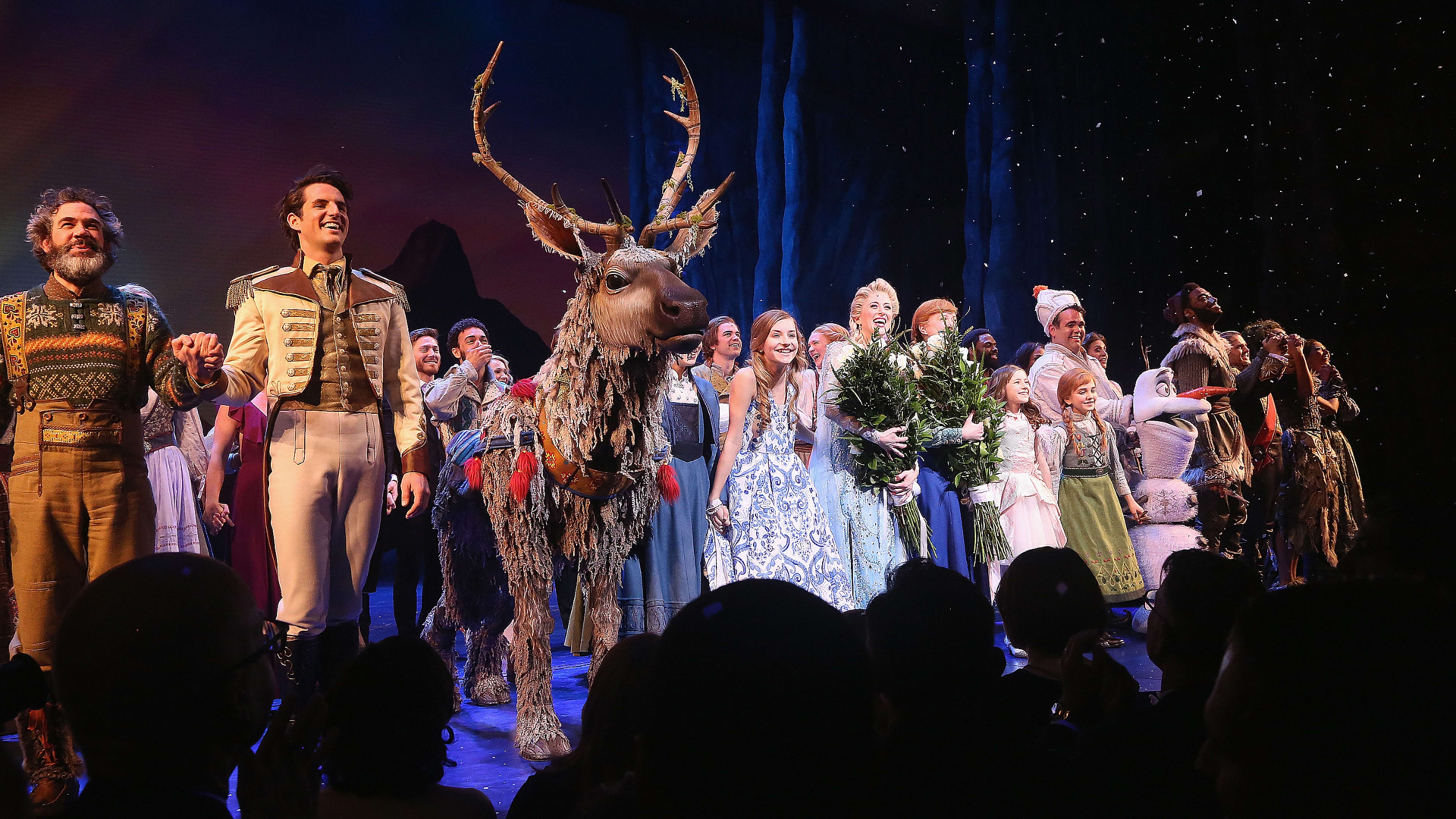Twenty-five years ago this year, Disney Theatrical Productions launched in advance of its first project, Beauty & the Beast, which debuted on Broadway in 1994. The stage show breathed new life into the Walt Disney Company’s live-entertainment efforts, kicking off a decades-long string of popular musicals from The Lion King and Newsies to the more recent Frozen.
Not all of its shows have gone the distance (Tarzan was a notable, um, swing and miss), but Disney has a pretty good track record of producing crowd-pleasing shows that run for years. The Lion King, which has been on the boards since 1997, has the distinction of being the highest-grossing Broadway show of all time, grossing about $2 million a week.

Filling theater seats is hard. On any given week, Disney’s shows are facing off against the likes of Wicked, Anastasia, or Harry Potter, all of which compete heavily for the attention and dollars of tourists seeking family-friendly fare.
To hedge its bets, Disney Theatrical has been increasingly trying to reach those audiences where they live–on social media and video sites like YouTube. As one example, Disney Theatrical ventured into VR in 2015, producing a 360 video of the Lion King’s legendary opening number. The experiment marked the first time a musical number was captured in VR in a Broadway theater.
For Frozen, the company got even more aggressive, releasing 10 major pieces of related video content in the show’s first nine months–a strategy that attracted more than 30 million views across Facebook, YouTube, and Instagram, according to Disney.
Those are impressive numbers, but does any of this actually get people off their phones and into theaters? Andrew Flatt, the Disney Theatrical senior vice president who oversees marketing, says yes. Flatt recently spoke with Fast Company from his office over Broadway’s New Amsterdam Theatre about how viral videos and social marketing factor into Disney’s efforts to entice theatergoers.
Below is an excerpt from our conversation, edited for length and clarity.
Fast Company: If you read the Disney earnings reports, as I do almost religiously when they come out every quarter, you don’t see a whole lot about Disney Theatrical. You’ll see how the movies performed, and you’ll get broad numbers. But you guys are kind of like this hidden world.
Andrew Flatt: Some of that is a reflection of the fact that we are a fairly consistent contributor to the overall piece of the studio pie. Once our shows are up and running, it tends to be perceived anyway, as a maintenance type of product. For us, we’re working on it eight shows a week to make sure that our audiences are full, but from the studio or the larger company point of view, there are eight, nine, 10 films a year that premiere, versus something like Frozen, which premiered on Broadway this year and is the first thing that we’ve opened on Broadway in almost five years. So 99% of our business is maintenance.
FC: Getting into the multi-media stuff and some of the videos that you guys have produced, how does that type of media benefit Disney Theatrical, given that it is somewhat self-sustaining? Was there a certain line of thinking that you or someone else came to where you said, ‘This is what we need to be doing more of to attract a certain audience?’
AF: Over the last five or six years, we’ve sort of evolved our thinking in terms of what substantiates the overall marketing mix. As consumers continue to absorb media in lots of different ways, we as marketers are having to come up with interesting and innovative ways to fill those new spaces that are being developed at any given time. I can’t imagine a universe where we will 100% go away from traditional types of media like billboards in the middle of Times Square. Part of what we’ve had to do is figure out where things like video content play a part in the overall marketing storytelling that needs to take place to continue to excite theater goers and inspire them to purchase tickets to see our shows.
FC: So you said about five years ago. What were some of the early projects that you put on video?
AF: I’ll be honest with you. Five years ago, our strategy was a bit more of a develop-a-strategy-as-you-go. As an organization, we needed to catch up with where consumers were already going in terms of self-generating their own content. So some of the early signs that led us to think differently about content strategy were actually videos that came out of cast members of our shows. I’m not sure if you’re familiar will the “Lion King on a plane” video?
FC: No, I’ll have to look that up. Sounds awesome.
AF: Our company of actors of the Lion King in Australia were moving from one city to another … and spontaneously, as they were sitting on an airplane, they all started singing “Circle of Life,” and one of those company members had the very, very smart forethought to start filming it. This was completely spontaneous, and it was not planned. That cast member, in turn, posted the video and it became a huge viral sensation. At this point … there’s 41 million views of that video, which is remarkable. So that was an early one.
FC: Did your video strategy take any convincing? Because I’ve talked to old-school people in the business who still resist the idea of putting too much on YouTube or some other platform. You know, you’re not really getting paid for it being on YouTube, and you can’t really show a definitive return in that sense. But the other side of the argument, obviously, is that it’s good publicity, and it gets people thinking about the show and maybe going to see it when they’re in New York or wherever it’s playing.
AF: The very clear answer to that question is, yes, there was some early resistance and some folks who needed reassurance–especially for a company like Disney that, historically, has been so precious about its brand, and about the content, and the IP itself. The ability to be able to go behind the curtain a little bit and reveal a bit was a bit of trial and error on our part. It took a collective effort to become comfortable with the notion of what is acceptable.
FC: So now we fast forward a little to the Lion King video in 2015, the first 360 video. You basically put the whole opening number online.
AF: That was a real strategic conversation about trying to be the first to market with something that we knew would break new ground. At that point in the Lion King’s life, to be able to get in front of new audiences and younger audiences and feel relevant–just the fact that something that’s been around for 20 years would do something in the 360 space, which in turn would open up publicity opportunities in media that would never even have thought of The Lion King as a part of its storytelling. Just the fact that we had intersected this archaic theatrical art form with a very of-the-moment piece of technology became a very appealing part of it for us.
FC: How do you show results for something like this? Is there a way to show that this kind of stuff actually gets people into the theaters?
AF: In the big picture, there’s not a specific means for us to be able to immediately track–someone has to see the video and track that person all the way through the purchase process. We don’t have that. But what we do have is … something that’s evolved over time and we’re really in the thick of at this moment. Upwards of 28 million people have seen our Frozen Tony Awards performance somewhere online. That 28 million has opened up a substantial retargeting pool for us to be able to, in turn, go back and serve advertising that they can then click through to purchase to see the show.
Recognize your brand’s excellence by applying to this year’s Brands That Matter Awards before the early-rate deadline, May 3.
